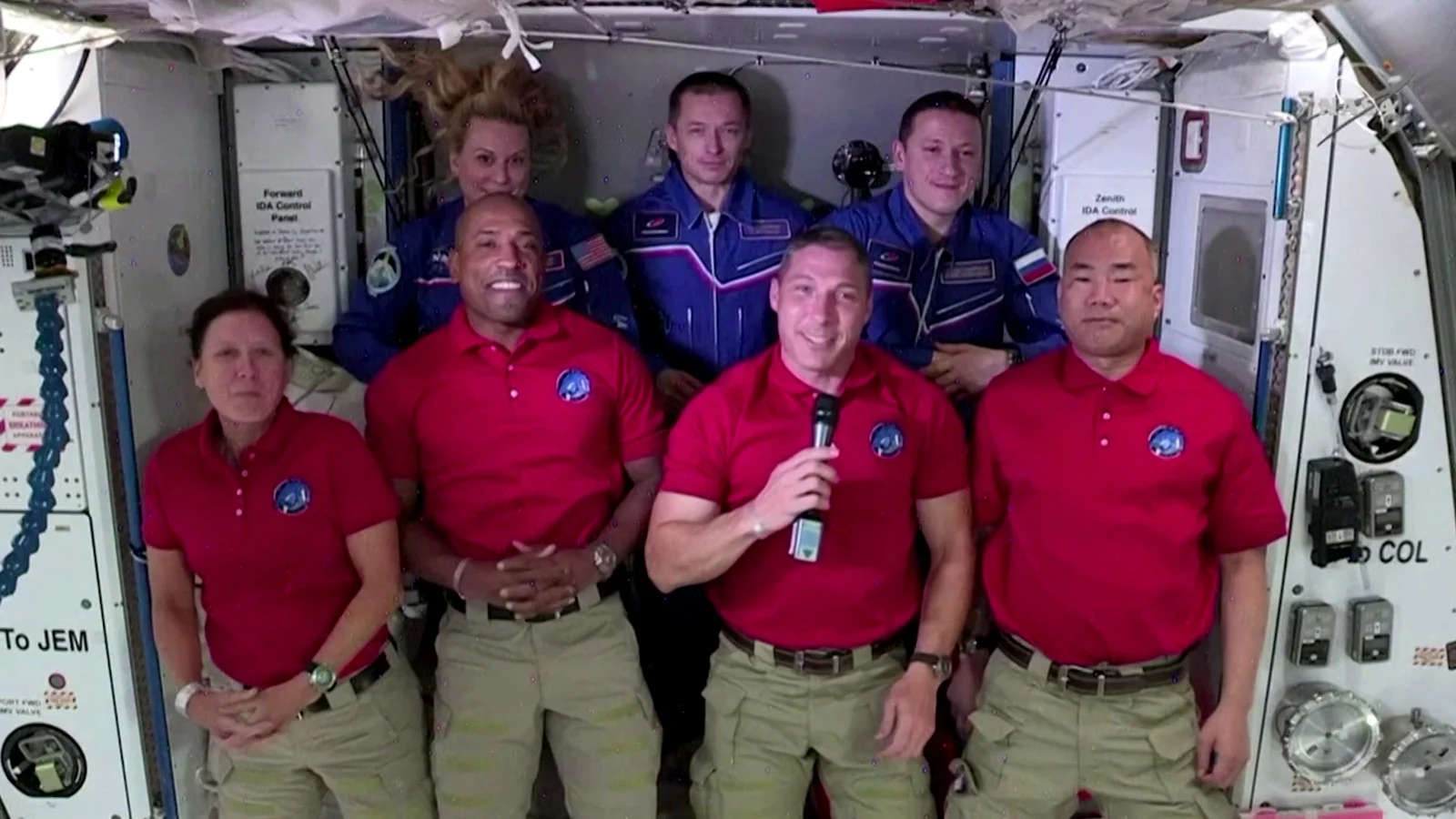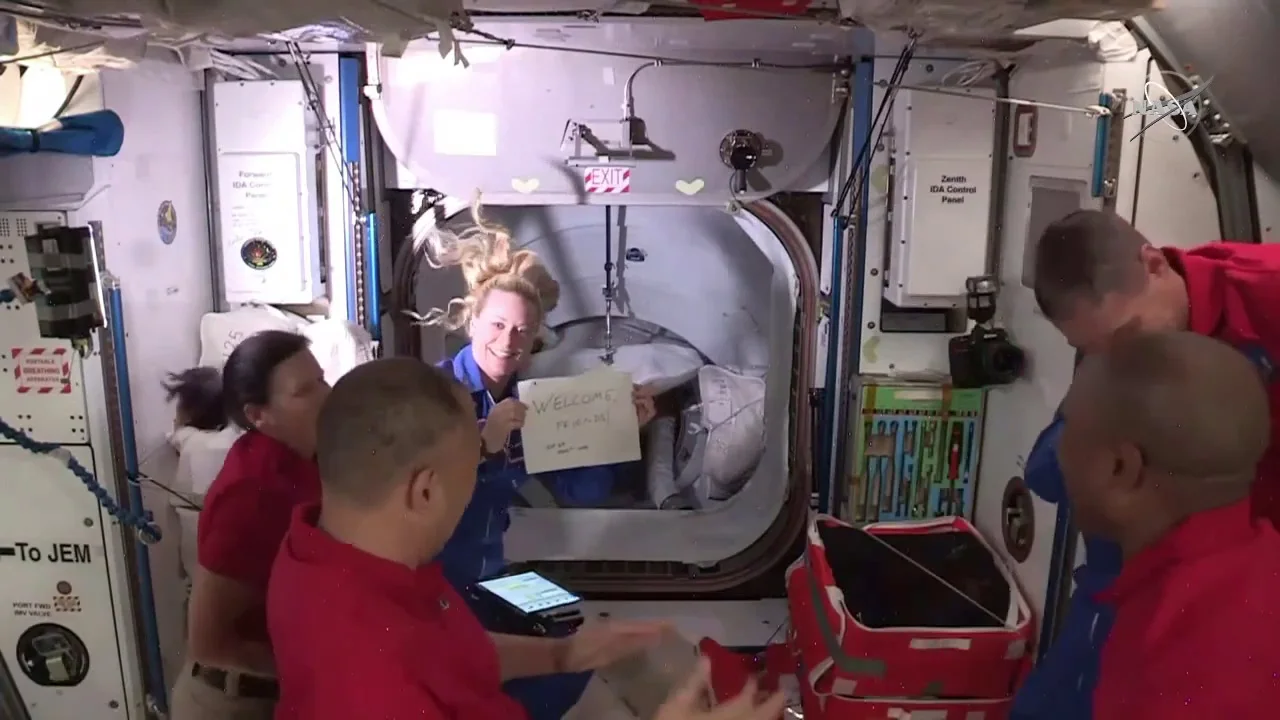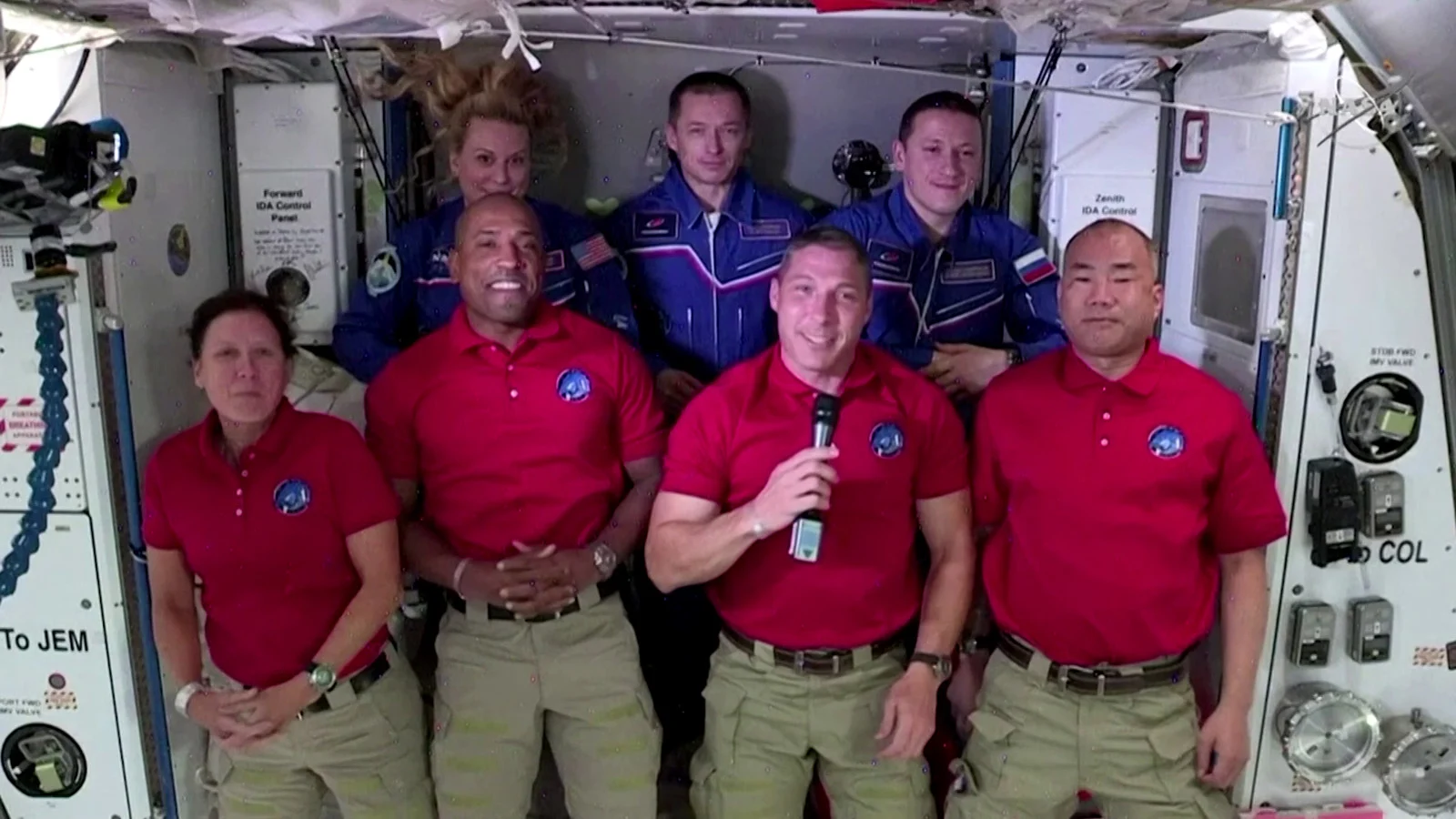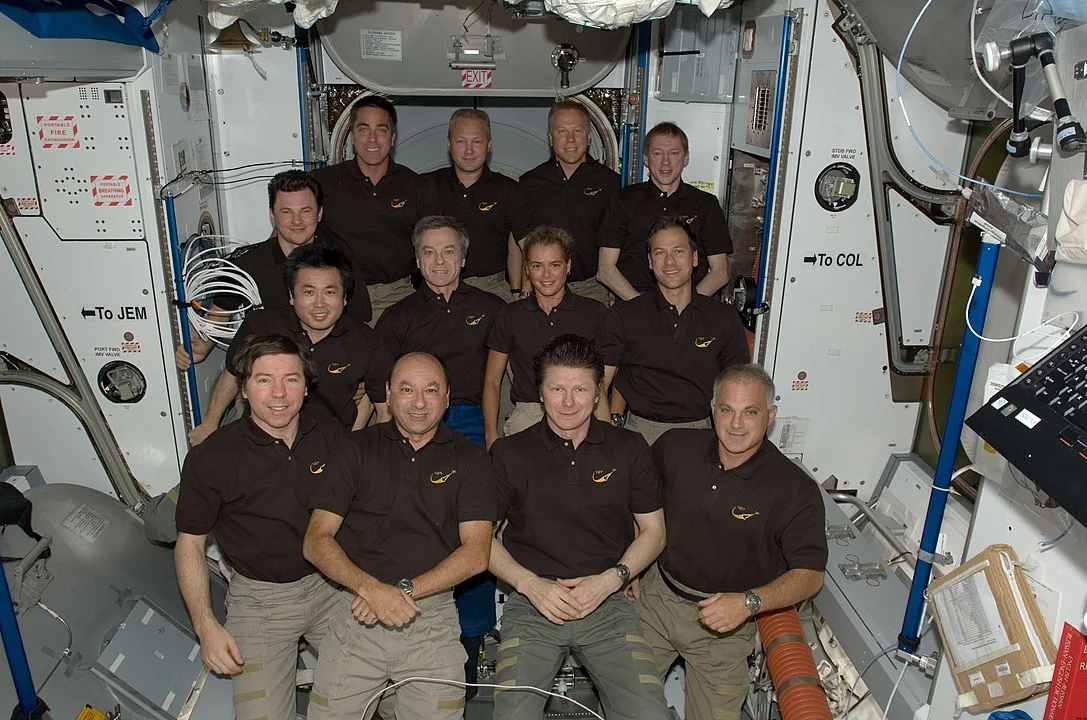
NASA's first official commercial spaceflight crew arrives at Int'l Space Station
The successful docking of the Crew-1 mission is a major milestone for human spaceflight
The crew complement on board the International Space Station swelled to seven early Tuesday morning, after SpaceX's Crew Dragon 'Resilience' successfully delivered four astronauts for their long-duration stay in space.
Just 27 hours after their launch from Kennedy Space Center, the hatches opened between Reslience and the Space Station at 1:10 a.m. EST, on Tuesday, November 17. There were hugs all-around as Kate Rubins of NASA, and Sergey Ryzhikov and Sergey Kud-Sverchkov of Roscosmos, greeted their friends, NASA astronauts Michael Hopkins, Victor Glover, and Shannon Walker, and JAXA astronaut Soichi Noguchi, with a warm welcome.

Kate Rubins holds up a "Welcome Friends" sign after the new crew members exited the Crew Dragon spacecraft. Credit: NASA TV
SpaceX had already completed two successful missions for their new Crew Dragon spacecraft, prior to this launch. The first uncrewed flight, Demo-1, took place in early March 2019. It was followed up by Demo-2, the first crewed flight earlier this year, which carried astronauts Bob Behnken and Doug Hurley for a roughly 2-month stay in space. These were both test flights, though, to ensure Crew Dragon was up for the job.
WATCH BELOW: SPACEX'S VERY FIRST HUMAN FLIGHT TO THE ISS DOCKS SUCCESSFULLY
Sunday's launch of SpaceX's Crew-1 mission, and its successful docking with the ISS late Monday night, marks the very first operational flight of NASA's Commercial Crew Program. Hopkins, Glover, Walker, and Noguchi now officially join the Expedition 64 crew. They will begin Expedition 65, commanded by Shannon Walker, in April 2021.

The Expedition 64 crew floats together as a group, while Crew-1 commander Michael Hopkins speaks during NASA's livestream of the event. Front row, left to right: Shannon Walker, Victor Glover, Michael Hopkins, and Soichi Noguchi. Back row, left to right: Kate Rubins, Sergey Ryzhikov, and Sergey Kud-Sverchkov. Credit: NASA TV
Prior to this launch, the only way for astronauts to reach the International Space Station over the past nine years was by flying on board a Russian Soyuz rocket. With the Soyuz program continuing alongside, it is likely that American astronauts will continue to occupy seats on those flights. However, with Soyuz and Crew Dragon both ferrying astronauts to the station now, this will open up more opportunities for astronauts to make the journey.
Although the crew complement of the station is usually six, it is capable of accommodating far more. Seven crew are currently on board, but the highest number ever was thirteen. This was in July of 2009, when Space Shuttle Endeavour was docked to the station, and the 7-person STS-127 crew joined the six members of Expedition 20.

Pictured here, left-to-right, row-by-row starting at the front, are Michael Barratt (NASA), Mark Polansky (NASA), Gennady Padalka (Roscosmos), Dave Wolf (NASA), Koichi Wakata (JAXA), Julie Payette (CSA), Robert Thirsk (CSA), Tom Marshburn (NASA), Roman Romanenko (Roscosmos), Christopher Cassidy (NASA), Doug Hurley (NASA), Tim Kopra (NASA), and Frank De Winne (ESA). Credit: NASA
The next SpaceX launch to the space station is scheduled for sometime in March of 2021. As part of their efforts towards re-usable spacecraft, the Endeavour Crew Dragon, which flew for the Demo-2 mission in May 2020, is expected to be refurbished and used again for this flight.











